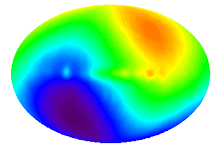Drug and the
dynamic microbiome
Xenobiotics
Shape the Physiologyand Gene Expression of the Active Human Gut Microbiome
The gut
microbiome is highly active, similar to nutrient-rich productive systems ►
Firmicutes dominate the active and damaged subsets of the gut microbiome ► Both
antibiotics and host-targeted drugs rapidly alter the active gut microbiome ►
Xenobiotics induce genes for drug metabolism, drug resistance, and stress
response
The human gut
contains trillions of microorganisms that influence our health by metabolizing
xenobiotics, including host-targeted drugs and antibiotics. Recent efforts have
characterized the diversity of this host-associated community, but it remains
unclear which microorganisms are active and what perturbations influence this
activity. Here, we combine flow cytometry, 16S rRNA gene sequencing, and
metatranscriptomics to demonstrate that the gut contains a distinctive set of
active microorganisms, primarily Firmicutes. Short-term exposure to a panel of
xenobiotics significantly affected the physiology, structure, and gene
expression of this active gut microbiome. Xenobiotic-responsive genes were
found across multiple bacterial phyla, encoding antibiotic resistance, drug
metabolism, and stress response pathways. These results demonstrate the power
of moving beyond surveys of microbial diversity to better understand metabolic
activity, highlight the unintended consequences of xenobiotics, and suggest
that attempts at personalized medicine should consider interindividual
variations in the active human gut microbiome.

沒有留言:
張貼留言